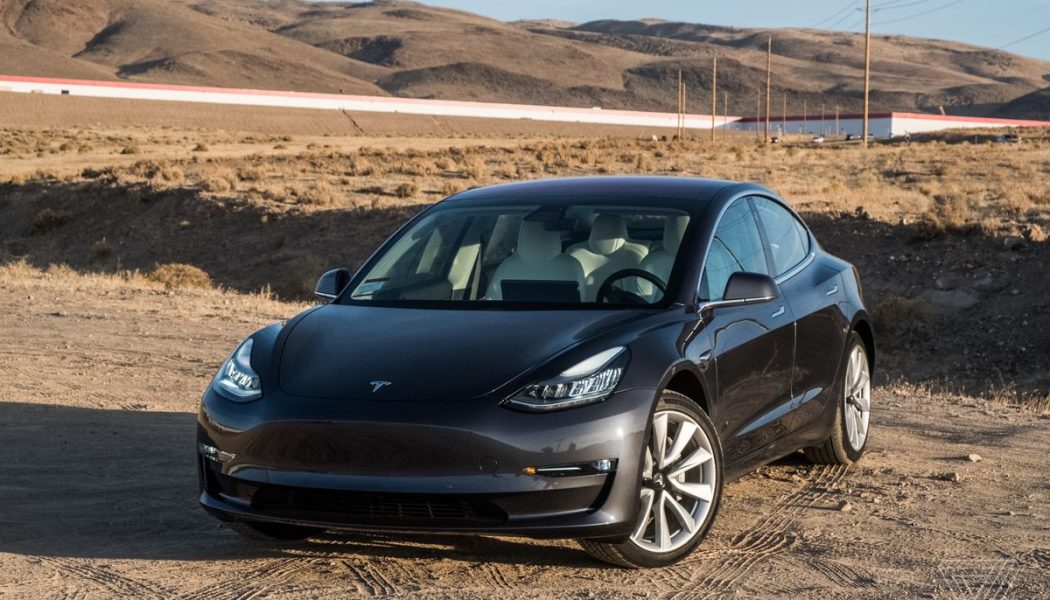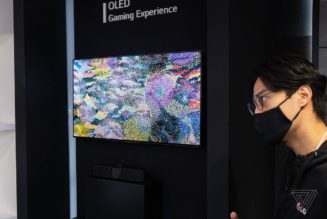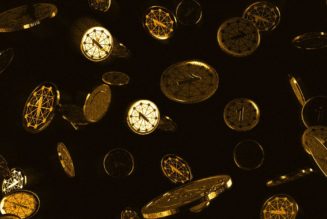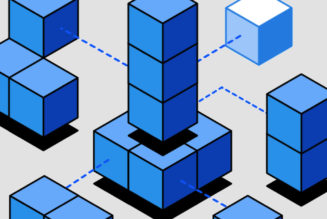Tesla’s Battery Day is upon us. The September 22nd event in Palo Alto, California, “will blow your mind,” CEO Elon Musk promised in a recent earnings call. “It blows my mind, and I know it!” Musk also hinted that we should expect “many exciting things” at the event.
What sort of things? Musk has left a trail of breadcrumbs over the years in the form of tweets, public comments, patents, and research papers published by his team of battery scientists, hinting at what kinds of battery breakthroughs Tesla may unveil.
Many exciting things will be unveiled on Battery Day 9/22 ⚡️
— Elon Musk (@elonmusk) September 11, 2020
Tesla is already the industry leader when it comes to squeezing range out of lithium-ion batteries in electric cars, so it will be interesting to see what other advances get showcased on Battery Day. The company originally planned to hold the event in April, but it has had to reschedule it until later in the year because of the COVID-19 pandemic. The company held a similar event focused on self-driving technology in April 2019.
Say what you will about Musk’s ability to meet deadlines and live up the expectations he sets, but he certainly knows how to put on a good show. But what does the billionaire CEO have up his sleeve that will blow our minds? Here’s our roundup of recent rumors as well as predictions from some experts we interviewed.
‘The Biscuit Tin’
Like most car companies, Tesla sources its batteries from major producers so it can focus on its core mission: building electric cars. The company’s so-called 2170 cells, which are currently used in Model 3 and Model Y vehicles, are produced by Panasonic at Tesla’s Gigafactory in Nevada.
But those supplies can become strained. In 2018, a shortage of cells at Panasonic added to Tesla’s “production hell” woes just as it began ramping up its big push to make the Model 3. Musk has criticized Panasonic’s pace of battery production as constraining the production of the Model 3 and the Model Y. And Panasonic CEO Kazuhiro Tsuga has predicted that its batteries will “run out” if Tesla continues to expand its business.
This suggests Musk might announce that Tesla will begin manufacturing its own batteries. Recent acquisitions, leaked photos, patent applications, and research published by Jeff Dahn, one of the pioneering developers of the lithium-ion battery and Tesla’s head of battery research, all point to Tesla making this big shift to in-house battery production.
Several photos of Tesla’s supposed in-house batteries recently surfaced on Electrek. The batteries, which are rumored to be from Tesla’s secretive “Roadrunner” project, appear to be twice the size of Panasonic’s 2170 cells. They also may be higher capacity while being lower cost for the company to produce by removing the tab, a part of the battery that forms a connection between the cell and what it is powering.
Caspar Rawles, an analyst at Benchmark Mineral Intelligence who focuses on the raw materials that go into lithium-ion batteries, said his group has dubbed the new cells “the Tesla biscuit tin” because that’s what it looks like. More energy per cell means fewer cells per pack, which can help drive down the overall cost of production for Tesla. And that could mean a future where electric cars are comparably priced with gas-burning vehicles.
It’s not just leaked photos of unknown origin that point to Tesla making its own batteries. The company posted job listings earlier this year seeking workers for “line cell manufacturing” engineers at its factory in Fremont, California. Tesla also struck a deal with South Korean company Hanwha Corporation to purchase battery formation equipment, with the equipment headed to Fremont first and then to Gigafactories in Nevada, Shanghai, and Berlin.
‘Million mile’ battery
Tesla is also expected to reveal new details about its quest to build a “million mile” battery, which is a reference to how long a battery can last in a car before needing to be replaced. This is where Dahn and his research team in Nova Scotia come into play.
In May, Reuters reported that the new “million mile” battery will be jointly developed with Chinese battery giant Contemporary Amperex Technology Ltd (CATL) and will utilize technology developed by Dahn’s team of academic battery experts. It was also reported that Tesla was in advanced talks to use CATL’s lithium-ion phosphate batteries, which use no cobalt, the most expensive metal in EV batteries.
The battery is expected to lower Tesla’s cost per kilowatt-hour — the unit of energy most commonly used to measure the capacity of the battery packs in modern electric vehicles — to under $100. Many experts believe that reaching that mark would allow Tesla to sell electric vehicles for the same prices as gasoline-powered ones, thereby making them far more accessible.
One of Musk’s main objectives has always been “making combustion seem obsolete to a consumer [and] making them feel that they have to go electric,” said Steve LeVine, editor-at-large at Medium and author of the 2015 book The Powerhouse: Inside the Invention of a Battery to Save the World.
“One of the ways to do that is making the car seem like it’s a lifetime car,” LeVine said. “If a battery is going a million miles, if you count that out — that’s 76 years.”
:no_upscale()/cdn.vox-cdn.com/uploads/chorus_asset/file/13668774/tesla_model_3_0638.jpg)
Patents, patents, patents
Tesla has filed a flurry of patent applications in recent months based on Dahn’s research. In December 2019, the company submitted an application for a patent for “dioxazolones and nitrile sulfites as electrolyte additives for lithium-ion batteries.” The substance could enable a better, longer-lasting, and cheaper battery for electric cars and home storage products, the company said in its application.
In April, another patent application was submitted, this time for something called a “single crystal” nickel-cobalt-aluminum (NCA) electrode. The most successful lithium-ion battery systems involve using nickel-manganese-cobalt (NMC) electrodes. In a paper published by Dahn and his team in the Journal of The Electrochemical Society regarding the significance of the single crystal cathode, he says: “We conclude that cells of this type should be able to power an electric vehicle for over 1.6 million kilometres (1 million miles) and last at least two decades in grid energy storage.” In other words, these new single crystal electrodes could enable Tesla to achieve similar or better energy density as NMC electrodes.
Tesla has also submitted an application for a new “tabless” battery cell design that it says improves on existing designs. Musk tweeted that “it’s a lot more important than it sounds.” Indeed, the photos that leaked to Electrek (which Rawles said looked like a biscuit tin) show a tabless cell. Tesla’s patent outlines a battery design where features like bumps and small spikes act to connect different layers rather than relying on a welded, unifying conductive tab.
Tabs are what make a clean connection to whatever the battery is powering. They also require a fair amount of finesse to manufacture. Streamlining that process by removing the tab could save Tesla a lot of time, materials, and money.
Cobalt on the chopping block?
Musk has been vocal about wanting to eliminate cobalt from Tesla’s batteries. In 2018, he tweeted that Tesla uses less than 3 percent of cobalt in its batteries and that the next-generation versions would have “none.” Battery Day could be an opportunity for the company’s CEO to outline exactly how he could achieve that.
Cobalt is a key component of batteries. It’s also the most expensive material in the battery and mined under conditions that often violate human rights, leading it to be called the “blood diamond of batteries.” As a result, scientists and startups are rushing to create a cobalt-free battery.
Dahn is one of those scientists. He co-authored a paper in 2019 that concluded that cobalt brings little or no value to NCA-type batteries where nickel is at least 90 percent of the transition metal layer. The paper hoped that it would spur more interest in cobalt-free materials and specifically named aluminum, manganese, and magnesium as three elements with more use than cobalt.
But Benchmark’s Rawles is skeptical, calling Tesla “very low cobalt exposed anyway.” Also, Tesla recently published a sustainability report in which the company declared it would work with the mining industry to find more sustainable sources of cobalt — which Rawles says is an indication that Tesla will be working with cobalt for some time.
:no_upscale()/cdn.vox-cdn.com/uploads/chorus_asset/file/13591776/Gigafactory_masthead_copy.0.jpg)
From Gigafactory to ‘Terafactory’
During the earnings call in which Musk promised to blow our minds, he also hinted at a possible future direction for his company’s manufacturing footprint. Tesla’s next factories won’t be called Gigafactories, he said — they may be called “Terafactories.”
If giga implies a billion of something, then tera equals a trillion. Tesla decided to call its facilities Gigafactories because it was going to produce “gigawatt-hours” (GWh) of battery capacity. A Terafactory could imply a “terawatt-hour” of battery capacity, or 1,000 GWh. That’s 20 times the current capacity of Panasonic’s production at Gigafactory Nevada.
One of Tesla’s recent acquisitions provides a clue as to how Tesla could achieve this exponential increase in battery capacity. Back in 2018, Tesla acquired a company called Maxwell Technologies in an all-stock deal worth $218 million.
Maxwell’s big innovation is dry electrode technology, which is more environmentally friendly than the more commonly used wet electrode technology. Maxwell’s technology eliminates the solvents in a battery cell through which electric current flows. The company says this dry electrode technology, which can be applied to batteries of varying chemistries, also boosts performance and is more cost-effective than wet electrode technology.
Transitioning to dry electrode technology could allow Tesla to eliminate a lot of the manufacturing space currently dedicated to wet electrode production, which, in turn, would enable it to pack more cell production into its facilities. Thus, a Gigafactory becomes a Terafactory.
:no_upscale()/cdn.vox-cdn.com/uploads/chorus_asset/file/15978147/kbarnes_190315_3296_tesla_Adelaide_Andrews_39.jpg)
Tesla as an electric utility?
Earlier this year, Tesla unveiled a new product called Autobidder, which allows customers involved in Tesla’s home storage projects, like its Australian battery farm, to sell energy back to the grid when they don’t need it. Think of it as a virtual power plant network. It’s not just aspirational: Tesla has also applied to become an electricity supplier in the UK.
There have also been leaked screenshots from one of Dahn’s presentations that imply that Tesla’s new in-house produced battery cells would be “suitable for grid-tied vehicles.” The presentation, which was later made private, said (emphasis ours):
With the smart grid, the driver should be able to make their vehicle available to be charged or discharged when parked at home or at work up to set maximum and minimum charge points so that the next needed drive is possible. Vehicle owners should be paid for this by utilities. The future is very exciting.
This would have huge implications for the ownership of Tesla’s electric cars and how customers could monetize their vehicles as batteries on wheels. But don’t expect Musk to announce Tesla as the second coming of PG&E. While there is value in staking out a position in energy platforms, Tesla is still far off from becoming its own utility.
‘One more thing’
A trademark of Musk’s public presentations has been revealing “one more thing,” whether it’s an updated Roadster or an electric-powered All-Terrain Vehicle. Battery Day isn’t a product event, but Musk is nothing if not a showman.
“Musk knows how to feed the techno beast by giving red meat to the folks who like these tech details,” LeVine said.
Musk is also acutely aware of the competition, whether it’s QuantumScape, the 10-year-old San Jose, California, startup backed by Bill Gates (another Musk antagonist), or Lucid Motors, the EV startup founded by the former lead engineer on the Model S. QuantumScape claims its lithium-ion batteries can extend the range of electric vehicles by 50 percent. And Lucid says it recently unveiled sedan, the Air, can achieve a range that is 20 percent better than the best Tesla.
EV batteries are no longer the sole province of Tesla. Legacy automakers like Volkswagen, General Motors, and Ford are funneling billions of dollars into EV development, and batteries will play a major role. Musk needs to seize the moment if he’s to remain in the pole position, LeVine said.
“The headlines say that these are Tesla killers,” he said of companies like QuantumScape and Lucid Motors. “This Battery Day is about Tesla saying, ‘Not so fast.’”










